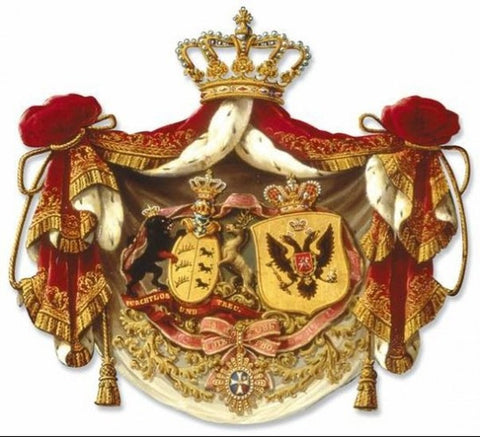Marriage and Coats of Arms

An early example of the practice of dimidiation can be seen in the Coat of Arms used by Margaret of France after her marriage to Edward I of England in 1299. prior to the marriage, the Queen as a daughter of France would have borne the ancient arms of France ( Blue with gold fleur de lis). The seal of Queen Margaret shows her shield split vertically in two, with England’s three lions on the left and France’s fleur de lis on the right. As both charges are cut in half by the dividing line, the front half of the English lion is joined with the French fleur de lis. Dimidiation also extended to civic Heraldry and alliances resulted in some fascinating combinations. It is slightly modified in the Coat of Arms for the Czech town of Zlonice. Here the right half of a black eagle is dimidiated with a coat per fess but, while most of the eagle is cut off in the middle, its head is left intact and allowed to enter the left hand side of the shield.


In much of Europe a marital Coat of Arms is denoted less by impalement and more by two separate shields set side by side or “accolee”. Often the two shields are tilted so they touch each other at one corner. In Germany the shields of both husband and wife are surmounted by helm and crest; a display of two complete achievements is known as an Allianzwappen or Eehewappen.




